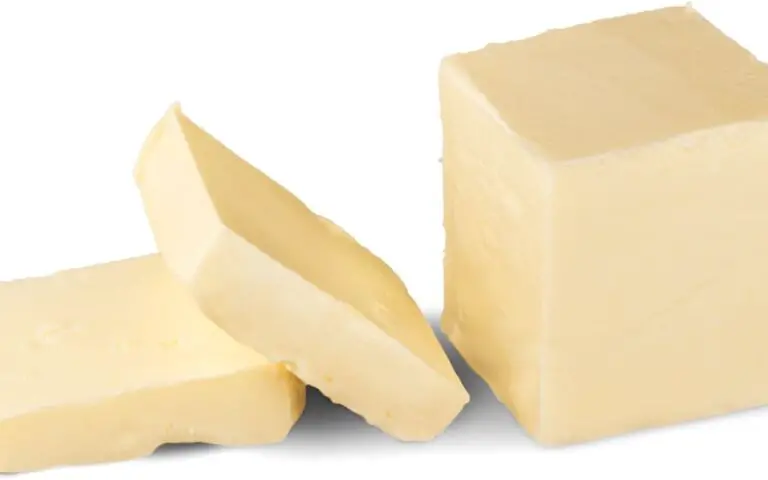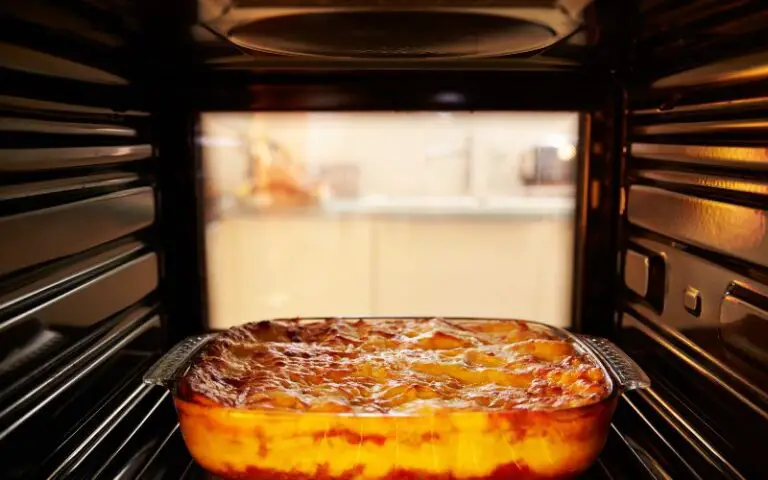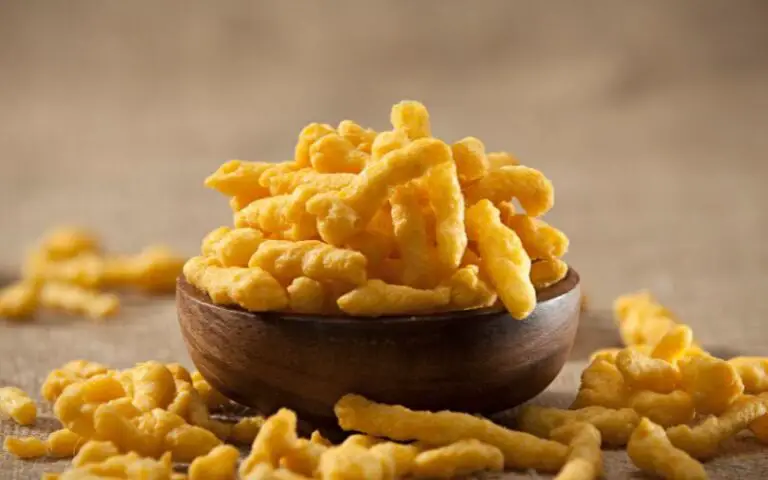Does Pizza Have Yeast? Unleashing the Hidden Truth!
Pizza is a comfort food staple in many restaurants, with different flavors and toppings to suit individual cravings.
But one secret to achieving a perfect pizza is a well-made pizza dough. It is the base for all ingredients.
Hence, many refuse to compromise on any ingredient that will compromise its leavening and taste.
Have you ever wondered if pizza contains yeast or if some other ingredient is responsible for its rising, lighter, and fluffier texture?
Pizza does indeed contain yeast. It is a microorganism that enables the pizza dough’s fermentation process. During the dough-making procedure, you can add yeast to the other ingredients. The yeast then acts on the present sugar, producing carbon dioxide gas, which the dough entraps, causing it to rise. Without this ingredient, you’ll have a flat and dense pizza dough.
Let’s explore the hidden truth behind the role of yeast in pizza.
We’ll also discover the science behind yeast fermentation, how it contributes to the deliciousness of pizza, and yeast alternatives in pizza.
The Science Behind Yeast Fermentation

Yeast fermentation is an age-old process used in baking, including making different types of pizza dough.
Here’s what happens:
- The yeast consumes sugar in the dough.
- This consumption triggers yeast fermentation, which converts sugar into carbon dioxide.
- Carbon dioxide production leads to bubbles forming in the dough, causing it to rise and become fluffy.
This fermentation process is common across various pizza crusts, from thin-crust pizzas to thicker ones. The result: A chewy texture you can’t resist!
Types Of Yeast Used In Making Pizza
There isn’t a one-size-fits-all rule regarding yeast in food preparation, especially for homemade pizzas. You’ll find multiple options:
● Active dry yeast: This type needs activation with warm water (110 – 115 degrees Fahrenheit) before mixing with other pizza crust ingredients.
● Instant yeasts: Containing additives for better reactivity, these are excellent for speedy baking times!
Although the idea of the best yeast for pizza dough depends on availability and preference, each type has something unique.
So, examine these yeast types and choose the one that offers the best factor you need prominent in your pizza.
To sum up, Understanding the role of yeast in baking is fundamental for anyone looking to master different types of pizza dough preparation.
After all, while there are various yeast-free pizza options, nothing quite beats tradition!
Exploring the Possibility of Making Pizza Dough Without Yeast
Who said you must have yeast in baking pizza dough? You’ll discover a fascinating world of yeast-free pizza options that could change your home cooking game.
The Science Behind Your Pizza Dough
Yeast fermentation plays a vital role in traditional pizza dough preparation.
The microscopic fungi feed on sugar, releasing carbon dioxide, which makes the dough rise, giving it that iconic chewy texture we all love in our pizzas.
Nevertheless, making pizza without this leavening agent is entirely doable and has its own merits.
What are Yeast-Free Dough Options?
As curious as it may sound, homemade pizza can taste just as good without yeast.
A popular alternative is baking powder, raising debates about baking powder vs yeast in pizza dough preparation.
But there are other yeast alternatives explained below.
- No-yeast recipes: These typically feature ingredients like baking powder or soda. Without the usual kneading and waiting for the dough to rise, these recipes offer quicker turnaround times.
- Baking Powder: This common kitchen staple doubles up as a raising agent when you’re out of yeast.
Before using this ingredient, consider the table below comparing the outcome of the pizza dough with yeast vs baking powder.
| Characteristics | Pizza With Yeast | Pizza Without Yeast (Baking Powder) |
|---|---|---|
| Texture | Light and airy | Dense and chewy |
| Taste | Slightly tangy | Mild and neutral |
| Flavor development | Enhanced | Limited |
| Crust thickness | Thinner | Thicker |
| Crust flavor | Yeasty | Neutral |
| Cooking time | Longer | Shorter |
| Rising time | Longer | Shorter |
| Versatility | More options | Limited options |
- Beer-Based Pizzas: Some innovative bakers have begun using beer to create distinct flavors while helping their bread dough rise naturally.
Unlike traditional methods, where we primarily use yeast in food preparation for its leavening
properties, these alternatives offer new textures and flavors for experimental cooks.
But remember, whether you’re dealing with bread/pizza dough or exploring types of pizza crust ingredients, getting your proportions right is key!
Add too much baking powder or beer, and your crust might end up tasting off; too little won’t give it enough lift.
The Use of Alternative Ingredients to Yeast in Pizza Making
In the world of homemade pizza making, yeast plays a key role. It’s pivotal in yeast fermentation, significantly contributing to the texture and flavor of your pizza dough.
However, there are instances when you may want or need to consider yeast-free pizza options.
But it’s not just about substituting yeasts; adding elements like salt or honey enhances the flavor
while helping your dough brown when baked.
Finding Your Perfect Pizza Dough Recipe
The role of yeast in baking is undeniable, but learning how different ingredients impact your homemade pizzas opens up new possibilities.
Each method imparts unique characteristics, whether a chewy crust from typical yeasts or a soft bread-like texture when choosing alternatives.
Remember that altering ingredients may affect taste and texture, so experimenting is part of the process until you find what hits your perfect balance!
No matter which path you follow, traditional with yeasts or diving into alternative options – keep exploring and enjoy every slice along the journey.
Effects of Different Types of Yeasts on Your Pizza Dough
Understanding the role of yeast in baking, especially in pizza dough preparation, is crucial when making pizza at home.
The yeast fermentation process plays a significant part in forming the texture and flavor of your homemade pizza.
#1. Different Yeasts and Their Impact
Different types of yeasts can have varied effects on your pizza dough:
- Instant Yeast: Instant yeasts are more reactive due to their additives. This factor makes them ideal for immediate leavening, resulting in a quick rise.
- Dry Active Yeast: Active yeasts require warm water (approximately 110-115 degrees Fahrenheit) to activate properly. They take longer but contribute to a richer flavor profile.
#2. Bread Dough vs. Pizza Dough
The type of yeast used also differentiates bread dough from pizza dough.
While both involve yeast fermentation, the variations in types and quantities create different textures – chewy for pizzas and soft for bread.
#3. No-Yeast Alternatives
There are several yeast-free options available if you prefer or need to avoid it:
- Baking powder: A common alternative leavening agent creates a softer crust similar to bread, unlike traditional yeasted pizza crust ingredients.
- Sourdough starter: This provides a unique tangy flavor apart from aiding the rising process.
- Beer: Recently, beer has been selected as an unconventional replacement for yeast, offering distinctive flavors.
Each type contributes unique characteristics, affecting the final product’s taste and texture, whether thin crust or thick, regular, or gluten-free.
The choice depends on individual preference, dietary restrictions, and availability of ingredients for your homemade pizza.
The Process and Ingredients Involved in Homemade Pizza Dough Preparation
When you’re on the journey of making pizza, knowing the process and ingredients involved in homemade pizza dough preparation is key.
And yes, while yeast fermentation plays a pivotal role in baking, there are also interesting yeast-free pizza options.
#1. Ingredients for Yeast-based Pizza Dough
- Yeast: An integral part of pizza dough is yeast. It’s responsible for making your crust light, airy, and chewy through a process known as yeast fermentation.
- Flour: The base of any good pizza crust. Its purpose goes beyond providing structure—it affects texture, too.
- Sugar: Acts as food for the yeast, helping it to convert into carbon dioxide, leading to the rise of your dough.
- Salt and oil: These two ingredients add flavor and aid in browning when baked.
It’s important to note that different types of yeasts can produce subtle variations in taste. So bear this in mind as part of your role of yeast in baking.
#2. Making Your Homemade Pizza Dough
With all your ingredients ready, it’s time for some exciting kitchen action—making homemade pizza.
First, dissolve your active dry yeast (activated at 110 – 115 degrees Fahrenheit) with sugar and warm water before adding flour.
Then thoroughly mix until smooth, then rest, allowing it to double in size. But let’s say you fancy a spin on traditional recipes or don’t have access to yeasts; use baking powder.
#3. Baking Powder: A Worthy Alternative
Baking powder is an alternative leavening agent aiding with bread dough vs pizza dough.
Mixing baking powder with flour, salt, and water can produce a yeast-free dough akin to bread than traditional yeasted pizza crusts.
Remember, yeast in food preparation isn’t the only way to achieve a tasty pizza crust. Be adventurous with different pizza dough types and discover new flavor layers!
After all, whether making a classic Margherita or exploring yeast-free options, enjoying homemade pizza is an experience like no other.






